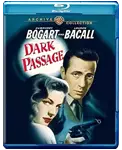DARK PASSAGE
Dark Passage is a quintessential example of film noir. Directed by Delmer Daves and released in 1947, the film stars Humphrey Bogart and Lauren Bacall in their third on-screen collaboration. Bogart plays Vincent Parry, a man who has been wrongly accused and convicted of murdering his wife. After escaping from prison, he undergoes plastic surgery to alter his appearance and meets Bacall’s character, Irene Jansen, who helps him prove his innocence. The film’s use of first-person camera angles and subjective point of view creates a sense of tension and claustrophobia, as we experience the story through Vincent’s eyes. “Dark Passage” is a masterful exploration of the dark side of human nature, with its themes of betrayal, revenge, and redemption.
PLOT
The film opens with Vincent Parry (Bogart), a man who has been wrongfully convicted of killing his wife and is on the run after escaping from prison. To evade the police, he undergoes plastic surgery to change his appearance, thanks to the help of a sympathetic plastic surgeon named Dr. Coley (Houseley Stevenson). With his new identity, Vincent sets out to clear his name and find the real killer, aided by the beautiful and determined Irene Jansen (Bacall), who believes in his innocence.
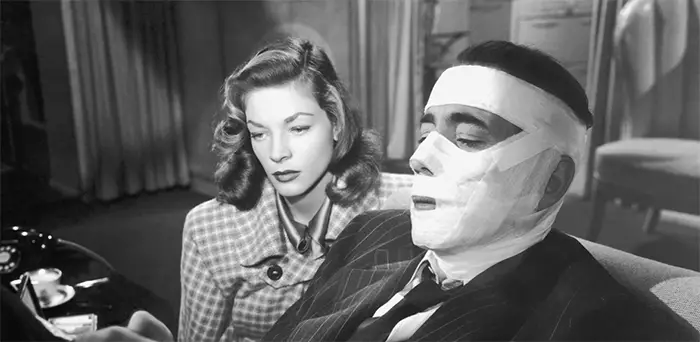
The plot thickens as Vincent and Irene encounter several obstacles along the way, including corrupt police officers, who are more interested in arresting Vincent than finding the real killer. Vincent has to stay hidden and rely on Irene to gather evidence and track down leads, as he cannot risk being recognized by anyone who knew him before his surgery.
One of the most memorable sequences in the film occurs when Vincent is trapped in Irene’s apartment while the police search the building. This scene is a masterclass in suspense, as Vincent has to hide and evade the police while Irene tries to keep them distracted. The film’s use of subjective camera angles, which puts the audience in Vincent’s shoes, makes this scene all the more tense and exciting.
As Vincent and Irene continue to dig deeper, they encounter more and more clues, leading them closer to the real killer. However, their pursuit is not without danger, and they soon find themselves in harm’s way. The film builds to a gripping and explosive finale, as Vincent and Irene risk everything to clear his name and bring the killer to justice.
CINEMATOGRAPHY
“Dark Passage” is a film noir that stands out not only for its gripping plot and memorable characters, but also for its innovative camera work.
One of the most striking aspects of the camera work in “Dark Passage” is its use of first-person point of view. This technique immerses the audience in the experience of the protagonist, Vincent Parry (Bogart), as he navigates his way through a world that is hostile to him. The film’s opening sequence, which shows Vincent escaping from prison and then undergoing plastic surgery to change his appearance, is shot entirely from his point of view. This technique creates a sense of claustrophobia and urgency, putting the audience in Vincent’s shoes as he fights for his survival.
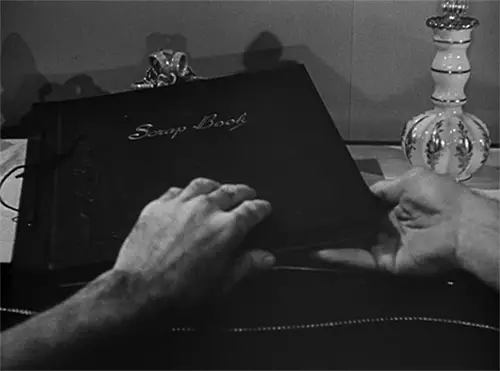
Another technique used in “Dark Passage” is the subjective camera angle. This technique shows the action from the point of view of a character, making the audience feel as if they are seeing the world through their eyes. One of the most memorable sequences in the film, where Vincent is trapped in Irene’s apartment while the police search the building, is shot entirely from his point of view. This technique creates a sense of tension and danger, as Vincent has to hide and evade the police while Irene tries to keep them distracted.
The film’s use of lighting is also worth mentioning. The cinematographer, Sid Hickox, makes masterful use of shadows and light to create a sense of atmosphere and mood. The use of chiaroscuro lighting, which creates strong contrasts between light and dark, is a hallmark of film noir, and “Dark Passage” is no exception. The film’s nighttime scenes are particularly striking, with the shadows creating a sense of danger and mystery.
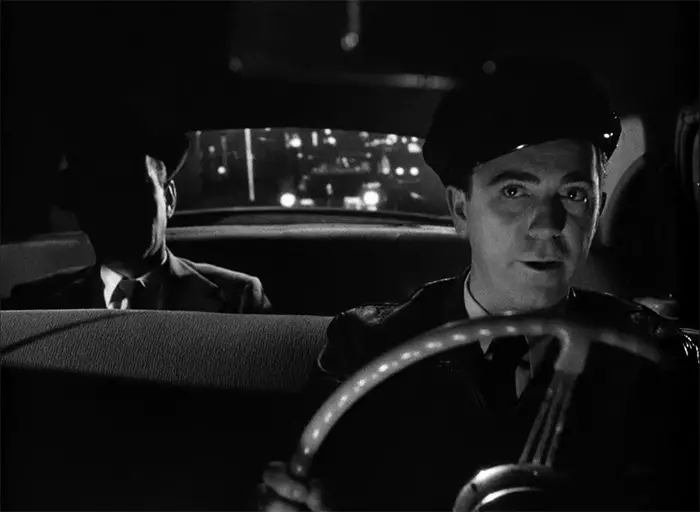
Another aspect of the camera work in “Dark Passage” that stands out is the use of close-ups. The film frequently uses close-ups of the actors’ faces to convey their emotions and reactions. This technique is particularly effective in conveying the tension and drama of the film, as the audience can see the characters’ expressions up close.
BOGART & BACALL
Humphrey Bogart and Lauren Bacall’s performances in “Dark Passage” are a key aspect of what makes the film so memorable. Bogart, who plays the protagonist Vincent Parry, delivers a nuanced and emotional performance that allows the audience to sympathize with his character’s plight.
Bogart’s performance is particularly striking in the film’s opening sequence, which is shot entirely from Vincent’s point of view. Bogart is able to convey a sense of urgency and desperation, as Vincent fights for his survival and tries to escape the police. Throughout the film, Bogart’s performance balances toughness with vulnerability, as Vincent tries to navigate a world that is hostile to him.
Lauren Bacall, who plays Irene Jansen, brings a sense of sophistication and intelligence to her role. Bacall’s character is complex, as she is both attracted to Vincent and suspicious of him. Bacall’s performance is particularly effective in the scenes where she tries to help Vincent while also trying to protect herself. Her chemistry with Bogart is palpable, and their scenes together have a sense of tension and intimacy that make them stand out.
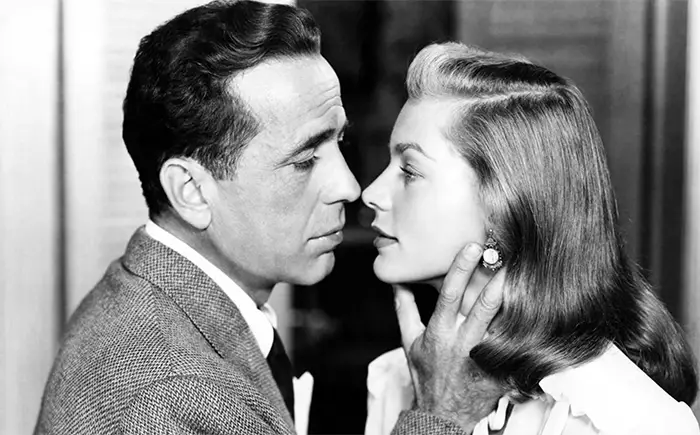
One of the most memorable scenes in the film is the long sequence where Vincent is trapped in Irene’s apartment while the police search the building. The scene is shot entirely from Vincent’s point of view, which allows the audience to feel his sense of claustrophobia and fear. Bogart’s performance in this scene is particularly effective, as he conveys Vincent’s desperation and sense of hopelessness.
Bacall’s performance in this scene is also noteworthy, as she tries to keep the police distracted while also trying to calm Vincent down. Bacall’s character is a crucial part of the scene, as she provides a sense of calmness and stability amidst the chaos.
THEMES
“Dark Passage” explores several themes that are central to the film noir genre, such as identity, morality, and justice. The film asks important questions about what it means to be a fugitive, and whether or not the justice system can be trusted.
One of the central themes of the film is identity. The film follows Vincent Parry, a man who undergoes plastic surgery to change his appearance in order to evade the police. Throughout the film, Vincent struggles to reconcile his past with his new identity, and to find a place in a world that sees him as a criminal. The film suggests that identity is not only a matter of physical appearance, but also of how we see ourselves and how others see us. Vincent’s struggle to define himself is a reflection of the larger themes of the film, which explores the tension between individual identity and social expectations.
Another theme that is explored in “Dark Passage” is morality. The film suggests that morality is not always clear-cut, and that there are shades of grey in the decisions we make. The characters in the film are forced to make difficult moral choices, and the film does not offer easy answers. For example, when Irene decides to help Vincent, she is acting against the law, but she is also acting in accordance with her own sense of right and wrong. Similarly, when Vincent is forced to take violent action to defend himself, the film raises questions about the morality of self-defense.
The theme of justice is also central to “Dark Passage.” The film suggests that the justice system is flawed, and that the innocent can be punished while the guilty go free. Throughout the film, Vincent is pursued by the police, who believe him to be guilty of a crime he did not commit. The film raises important questions about the role of the justice system in society, and whether or not it is capable of dispensing justice fairly.
RECEPTION
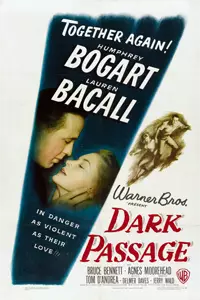 When “Dark Passage” was released in 1947, it received mixed reviews from critics. Some praised the performances of Humphrey Bogart and Lauren Bacall, while others criticized the film’s implausible plot and unrealistic characters.
When “Dark Passage” was released in 1947, it received mixed reviews from critics. Some praised the performances of Humphrey Bogart and Lauren Bacall, while others criticized the film’s implausible plot and unrealistic characters.
Bosley Crowther of The New York Times praised the film’s “atmosphere of suspense” and the performances of Bogart and Bacall, but also criticized the film’s “unbelievable” story. He wrote, “The murder yarn of ‘Dark Passage’ is one that only a credulous audience could accept with ease.”
Other critics echoed this sentiment, with some arguing that the film relied too heavily on the star power of Bogart and Bacall and not enough on a well-written script. Despite these criticisms, the film was a commercial success, earning over $3 million at the box office.
Over time, “Dark Passage” has become a classic film noir and is now regarded as one of the best examples of the genre. Modern audiences appreciate the film’s visual style, its use of subjective camera shots, and its exploration of themes such as identity and justice. While the film may have received mixed reviews upon its release, its lasting impact on the genre of film noir and its continued popularity among audiences have cemented its place in film history.
POPULAR CULTURE
One of the most notable references to “Dark Passage” can be found in the popular television show, “The Simpsons.” In the episode “Cape Feare,” Sideshow Bob is released from prison and begins stalking Bart. In one scene, Bob sings a parody of the song “Too Marvelous for Words,” which was featured in “Dark Passage.” The lyrics of the song are changed to reflect Bob’s obsession with Bart, with lines such as “My dear, I’m obsessed with revenge. Haven’t you ever had an obsession?”
In literature, the influence of “Dark Passage” can be seen in the works of James Ellroy, a writer known for his hardboiled crime fiction. Ellroy has cited “Dark Passage” as one of his favorite films and has referenced it in his novels, including “The Black Dahlia” and “L.A. Confidential.” Like “Dark Passage,” Ellroy’s novels often explore themes of identity, morality, and justice.
The film “Memento” also shares similarities with “Dark Passage” in terms of its exploration of identity. Both films feature protagonists who are struggling to make sense of their lives after experiencing a traumatic event. “Memento” also utilizes non-linear storytelling, similar to “Dark Passage,” as a way to convey the protagonist’s confusion and disorientation.
In music, the band Radiohead references “Dark Passage” in their song “Exit Music (For a Film).” The song was originally written for the final scene of the film “Romeo + Juliet,” directed by Baz Luhrmann. The lyrics of the song describe a couple escaping together, with the lines “We hope that you choke, that you choke. We hope that you choke, that you choke.” These lyrics are a direct reference to a scene in “Dark Passage” in which Vincent and Irene imagine the police choking on their cigarette smoke as they escape together.
Overall, “Dark Passage” has had a lasting impact on popular culture, influencing works of literature, film, and music. Its exploration of themes such as identity, morality, and justice has resonated with audiences and artists alike, and its influence can still be felt today.
Explore more Film Noir
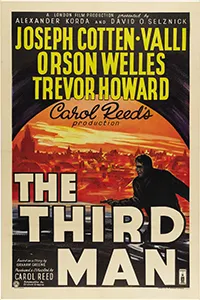
Classic film noir set in post-WWII Vienna, where a writer investigates the mysterious death of his friend.
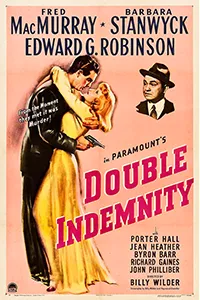
A gripping film noir about a seductive woman who convinces an insurance salesman to plot a murder.
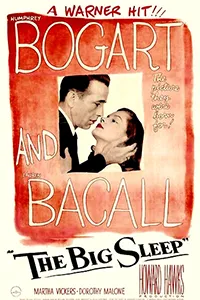
This classic film noir follows private detective Philip Marlowe as he investigates a complex case involving a wealthy family.
